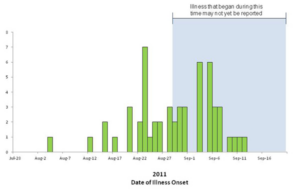Rumor alert: White House backing off from standards for food marketing?
Sometimes when I hear rumors that I can’t corroborate, I keep fingers crossed that they aren’t true. Here’s one.
Rumors say that the White House has caved in to food, beverage and advertising lobbying groups on the nutrition standards for food marketing to children developed by the Interagency Working Group (IWG).
Recall: the IWG’s members—the FDA, FTC, USDA, and CDC–produced recommendations for nutrition standards for marketing foods to kids (see previous posts).
The food and beverage industries think that if the standards are adopted, they will have to abide by them, thereby losing sales. They do not want restrictions on how, when, and where they advertise their products to kids.
Rumors say that the FTC—the agency that regulates food advertising—is being pressed by the White House to back off.
Rumors say the FTC is withdrawing the proposedstandards for teens except for some in-school marketing, and that the FTC’s explanation is that “to be successful in this endeavor food companies must be given leeway to shape an approach that will promote children’s health, without being overly burdensome on industry….”
Could the House Energy and Commerce Committee’s October 12 hearings on the standards have anything to do wth this? Or the tough memo prepared by committee staff in preparation for the hearing? The staff memo raises highly critical questions about the FTC and the IWG report.
The proposed standards, please recall, are voluntary. And I didn’t think they were all that restrictive (see previous post).
But if the rumors are true, even this administration can’t do anything to limit food marketing to kids and we are right back where we were in 1979, the last time the FTC tried to do so.
Please say it isn’t so.
Addition 1: FTC has now posted its prepared testimony: “As a result of the many comments we received from various stakeholders…the Working Group is in the midst of making significant revisions to its preliminary proposal. The anticipated revisions go a long way to address industry’s concerns.”
It gets worse:
The Commission staff believes that this approach resolves many of the flashpoints that generated strongest industry concern.
For instance, FTC staff has determined that, with the exception of certain in-school marketing activities, it is not necessary to encompass adolescents ages 12 to 17 within the scope of covered marketing….In addition, the FTC staff believes that philanthropic activities, charitable events, community programs, entertainment and sporting events, and theme parks are, for the most part, directed to families or the general community and do not warrant inclusion with more specifically child-directed marketing.
Moreover, it would be counterproductive to discourage food company sponsorship of these activities to the extent that many benefit children’s health by promoting physical activity.
Finally, the Commission staff does not contemplate recommending that food companies change the trade dress elements of their packaging or remove brand equity characters from food products that don’t meet nutrition recommendations.
Addition 2: Margo Wootan of CSPI provides a copy of her written testimony for the IWG .
Addition 3: Here’s the written statement of Dale Kunkel of the University of Arizona.
Addition 4, October 11: Adweek headlines its story on this fiasco, “Ronald McDonald, Toucan Sam to get pardon from feds?”



